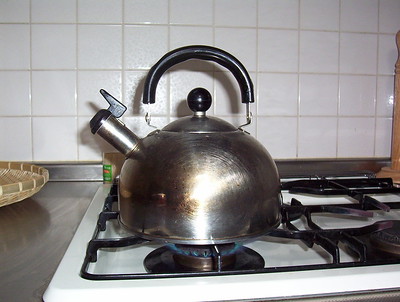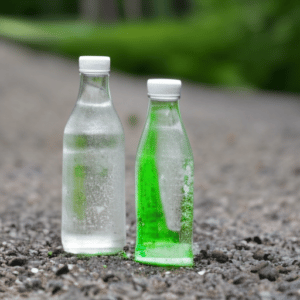Have you ever wondered how to make distilled water with a kettle? Distilled water isn’t just an extra clean solution if you’re looking to upgrade your drinking water. You can use distilled water to reduce the risk of mineral build-up in your machinery. The distillation process can transform dirty water into drinkable one in an emergency. Even your own distilled water can be utilised for cleaning.
Unfortunately, distilling is something that most people are not familiar with. They assume they need to either buy bottled distilled water for their purposes or store distilled water they’ve gotten elsewhere for use later.
However, with a little science and creativity, you can create your own distilled water much faster than you’d expect. Today, we’re going to walk you through the process of distilling water using either your home kettle or a stainless steel pot.
Is Boiled Water the Same as Distilled Water?
You might be wondering, ‘is boiled water distilled water?’ or ‘can you just boil water to make it distilled’?
Well, the first thing you need to know when you want to make distilled water is that it’s not the same as just boiled water. A lot of people assume all they need to do to make purified water with the same properties as distilled water is boil some water in a kettle.
Distillation, however, involves actually heating your water to the point of vaporisation and then using the condensation process to turn the vapour back into the water. Distillation happens a lot in the natural world. Water rises from the earth’s surface when the sun is shining, leaving contaminants behind and forming clouds. As the temperature in the upper atmosphere drops, the vapours cool and convert into rainwater.
Notably, while you can’t simply heat water to boiling point to make distilled water, you do need boiled water to create distilled water at home. The important point to remember is that boiling water is just one part of the entire process of distillation.
Distilled Water: Process and Uses
As mentioned above, the distillation process is not the same as simply bringing your water to boiling point. Boiled water isn’t necessarily distilled water. To make distilled water, you need to put the water through distillation, wherein the pure H2O within the water is boiled away from its contaminants. The water is boiled, and the pure water is turned into steam.
The process of capturing and cooling this steam so it can be turned back into the water is how we create distilled water. The idea is that distilling water will help remove some of the excess contaminants, chemicals, and contaminants in standard water.
You can then use distilled water to clean out steam irons and conduct other forms of cleaning. However, it’s not certain whether distilled water is suitable for human consumption. While you can drink distilled water in some cases, it’s not as healthy as you might think. Although you are removing chemicals and other substances from distilled water when you make it, you’re also removing the mineral content of the water.
Minerals in the water we drink are important for hydration. However, some people may still be able to live on distilled water for a while if they need to remove contaminants, impurities, and bacteria from dangerous sources of water (like river water) when in an emergency situation.
Distilled water is also ideal for many medical and cleaning purposes because it’s free from bacteria, impurities, and other substances that could be problematic in these environments.
A Simple Guide on How to Make Distilled Water With a Kettle

The easiest method of making distilled water at home involves boiling water in a way that allows you to rapidly cool the steam created as your water begins to boil. You can use a kettle for this process by filling a kettle with water from the tap and heating it on the stove until it begins to boil. When making distilled water, it’s often easier to use a stovetop kettle because it will continue boiling even after it reaches its maximum temperature. An electric kettle will usually turn itself off automatically when it’s done boiling; this helps to protect the plastic and the heating element inside of the kettle. It’s also easier to follow this method using a large stockpot with a lid and a smaller glass or plastic pot.
When making distilled water with a kettle, follow the few steps below.
Step 1: Fill Your Stovetop Kettle
Fill your stovetop kettle with tap water or the water you want to still into drinking water. Try not to overfill the kettle too much, as this can make it too easy for the water to boil over. Place the stove on high heat and place a smaller pot or plastic bowl within the stovetop kettle so it floats on top of the water.
Step 2: Flip the Kettle Lid and Place It on the Pot
Place the lid of the kettle upside down on the pot. Flipping the lid should allow for the condensed distilled water to collect on the metal lid of the kettle to turn back into liquid. Because the lid will be steeped, it should allow the water to trick down into the central pot floating inside your kettle.
Step 3: Use Some Ice
To ensure the steam from your kettle can condense when it hits the lid of your stovetop kettle, fill the top of the inverted lid with ice from your ice maker. The difference in temperature will speed up the condensation process.
Extra Tips
You’ll need to replenish your stovetop kettle lid several times to make sure you can continue to create the distilled liquid after a while. You can then transfer the distilled water to a clean plastic bottle or a plastic bowl at home. Try to ensure other contaminants can’t come into contact with your DIY distilled water. You may need to apply a cover to protect your water against impurities.
Remember to keep an eye on the bowl you use when learning how to distil water at home. A plastic bowl could melt when exposed to extreme heat.
What Can I Use Instead of Distilled Water?
Learning how to distil water at home can take a lot of time. You’re unlikely to fill an entire bowl or plastic bottle with distilled water from one session. It takes a while to get all the water boiled and converted into distilled water through steam. You’ll also need a lot of ice, which can make the process a lot more complex and time-consuming.
If creating your own distilled water isn’t an option for you, then you might be wondering what other alternatives you can use instead of distilled water.
First and foremost, your options will depend on what you’re going to be using the liquid for. If you want to create more purified water, boiled water will help eliminate bacteria and impurities without eliminating the minerals you need for your drinking water. You can even store boiled water in plastic bottles for later. Other options instead of distilled water include:
Distilled Water Alternatives

• Mineral water or spring water: mineral water is usually much cleaner than standard tap water because it goes through an extensive purification process. You can check the information on a bottle of spring water or mineral water to see what minerals are left within the container. This is generally better for drinking when you want simple water for drinking or cooking.
• Deionised water: if you don’t have time to make distilled water at home, you could consider buying deionised water. This is a special kind of water that eliminates mineral ions from the water. However, this form of water is generally intended for specific purposes.
• Bottled water: most bottled water and water kept in other containers will be kept free from bacteria if the right method is used to bottle the moisture. Make sure you check the ingredients and information on your water before consuming it.
Are There Other Ways to Make Distilled Water?
As you’ve learned, DIY water distillation is not a difficult process.
If you have access to ice cubes and tap water, as well as boiling water, you can place tap water in a large pot and use a combination of plastic wrap and ice cubes to transform steam from that boiling water into distilled water. You’ll usually need a very large pot for this process, and you’ll need to make sure not to melt the plastic wrap.
You can also create processes for distilling water with a set of bowls and ice. A connecting tube between a hot source of boiling water and a bowl surrounded by ice can be a fantastic way to make distilled water. Scientists often use far more complex methods featuring connecting tube components and beakers to remove minerals and other substances from water.
Making Distilled Water at Home
Making distilled water at home is easier than you’d think if you follow the instructions on how to make distilled water with a kettle properly. Anyone can create and drink distilled water with a pot, bowl (or another container), a source of heat, and a way to convert steam into water. Just be careful with drinking distilled water too often, as you’ll miss out on essential nutrients.
It’s also important to be careful with any pot, bowl or container you’re going to be heating when learning how to distil water at home. When you make distilled water at home, you’re working with a lot of heat, which can even cause plastic bowls to melt. Ensure you’re using your pot carefully, and you don’t use anything that could melt if you place a pot upside down on a stovetop kettle.

